Vintage Recipe Roulette: Apricot Wildcards
Did you know apricots were a New Year's thing? The bell tolls for me...
One of my favorite things about mid-century cookbooks is the obsession with elaborately themed parties. There’s the 1946 Doughnut Corporation’s Halloween Party book, and Fanny Craddock’s bizarre 1960s Christmas extravaganzas. I’ve been perusing the New Year’s party ideas, and my copy of the 1959 Tested Recipe Institute’s Foodarama has a futuristic bent — they want you to make little martian tablescapes and hang silver stars from your ceiling.
I also really love the Roman numeral clock cakes and platters.
In looking at all of these New Year’s ads and cookbooks, I keep seeing…apricots. Here’s an example of the food industry pushing apricots for New Year’s from a 1920 Libby’s advertisement in an issue of The Ladies’ Home Journal:
It makes sense if you want to sell more apricots, right? But does it make sense if you want to eat more of them?
They’re a summer fruit after all, along with their relatives, peaches and plums. A little Googling, and I learned that January 9 is National Apricot Day. It doesn’t make a ton of sense in the US, but admittedly, I did see apricots in the produce section last week. They ARE in season in the southern hemisphere. As for why they are a New Year’s thing according to some food adverts, my best guess is that the idea is appropriated from Asia’s Lunar New Year. Apricots are native to the Himalayas and often given as gifts in China with other dried fruits, reportedly to symbolize prosperity. They’re great dried any time — especially dipped in super dark chocolate!
The word is believed to come from the Greek for “early ripening”, the same root as “precocious”, and the trees typically bloom somewhere around the Lunar New Year, time-wise. The flowers of some Asian varieties are spectacularly gorgeous, bright yellow gold dripping from the branches (you gotta see some of the photos here), and they are a common New Year’s decoration in some parts.
Maybe the new year’s idea is understandable when you think about what a delight they are — little golden sundrops, full of promise. Let’s see if we can cook ourselves up some new year optimism.
Of course, in any tasting menu there is always room for Jell-O, so I’ve got not one, not two, but three vintage apricot (or apricot-flavored, let’s be frank) recipes to get the new year started off right …um, started.
First up, the Apricot Salad from my grandmother’s 1975 church cookbook:
I can’t tell for sure, but this sounds like ratios for a “fluff” style gelatin salad, and not a mold. Since, as is the case with many a community recipe, there are precious few instructions, I can’t say for sure. It might just be assuming that any idiot would know how to mold it up. I’m going to put it in a square pan in case it does set into something that can be cut into pieces, but it’ll also work if it’s spoon-worthy.
It’s quite easy — just mix the dry powder with cream cheese so that you don’t get lumps from either ingredient, and mix with hot water. Chill just until starting to thicken, and mix in crushed pineapple and whipped topping.
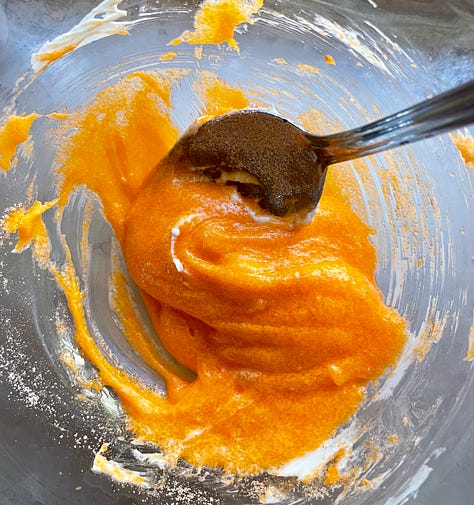
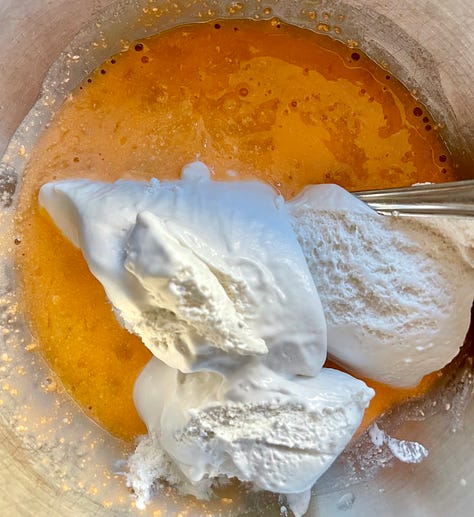

Next, divinity. My grandmother liked divinity, but as angelic as it tastes, it’s a devil to make, and I only remember her making it a handful of times. As good a cook as she was, I do remember She used to say that it wouldn’t work on a humid day and was careful to wait for crisp air, so I don’t remember her ever having trouble with it setting up, but unfortunately the humidity near me today is dicey for divinity purposes — it’s at about 50%, which gives me a 50-50 chance of disaster. The Jell-O version (not the one my grandmother used) is supposed to make divinity easier through added stability from the gelatin, and it also makes this recipe apricot flavored and colored, so let’s hope for the best.
It’s not a super easy recipe — you either need a candy thermometer or have to check carefully for the hard ball stage of sugar boiling, and hot sugar can be dangerous. If you make this, be very careful and consider heatproof silicone gloves and such. You whip the egg white (I suggest pasteurized even though it’ll be exposed to hot sugar) and Jell-O powder to peaks, and then SLOWLY drizzle in the sugar while continuing to mix. As it cools, it will start to stabilize, increase in volume a bit with air incorporation, and lose its shiny character. That’s the time to stop. If you stop too soon, you’ll get pools instead of blobs.
Lastly, I can’t resist making the peach half baskets with mayo fruit salad (apple, celery, nuts, mayo + whipped cream dressing) pictured on the Libby’s ad, but I’m going to use apricots. I suggest using the ones with skins for this, to keep them a bit more stable, and I couldn’t get the celery strips to curve properly, so I used a sliver of apple slice for the handle.
I can hear you thinking that although you don’t think you want apricot skins, where you’re really feeling hung up is the mayo on fruit salad. I feel your pain, I do. And since I’m the one making it, I’m about to taste it, too.
Let’s see the results!
The salad is indeed a fluff kind of thing, supremely unimpressive-looking, but usually pretty tasty. You can improve its attractiveness through carefully considered garnish. Or, you can do as I’ve done here and just slap canned fruit on top to really lean into the absurdity. It tastes pretty good, actually. It’s sort of like a pudding with a little texture from the crushed pineapple, but the apricot is the more prominent flavor. I like it much better than a slice-able gelatin mold.
The divinity, though, was so stabilized by the Jell-O that it went from shiny to too stiff in the 0.3 seconds that I turned my back to make sure the spoons I buttered were buttered enough.
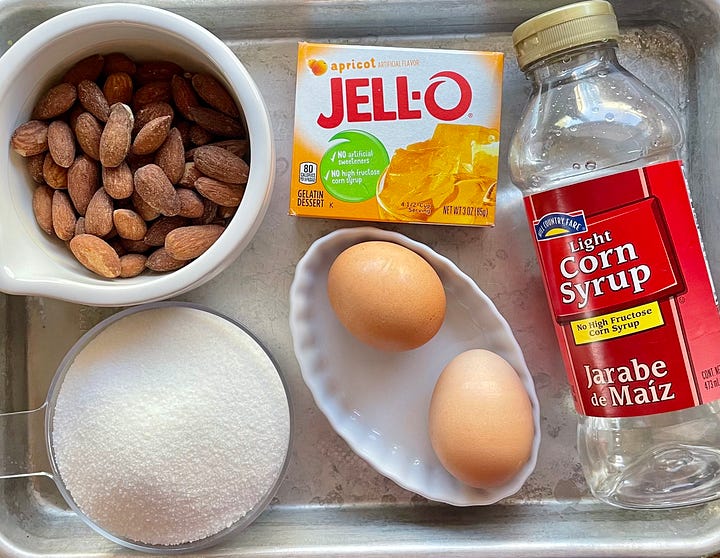

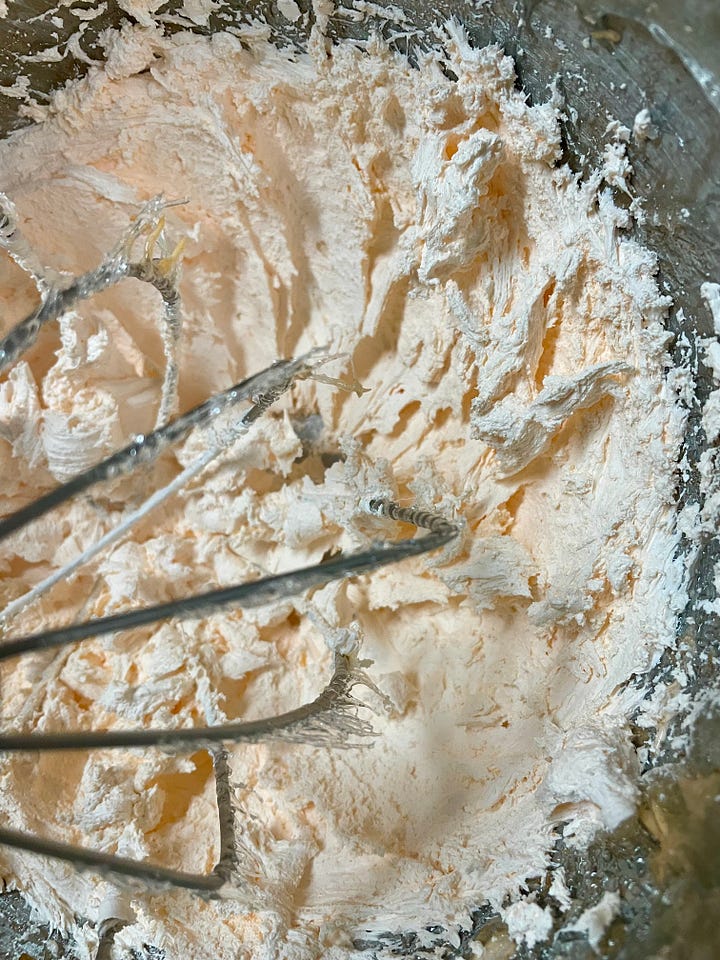
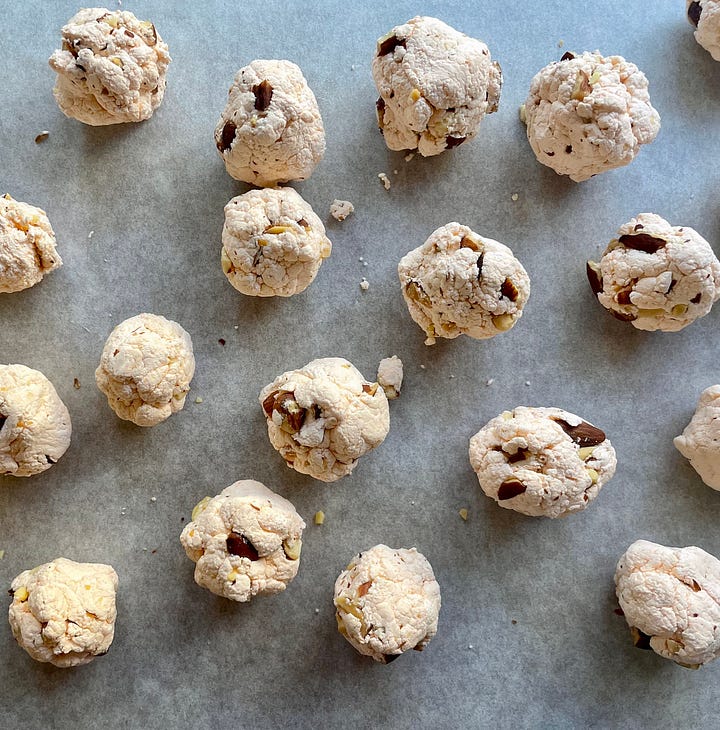
Alas, not up to snuff, but still rollable into balls. After letting them dry for a while, I have to admit they are still very light and delicious — not heavenly perhaps, but firmly in the stratosphere. I like the apricot flavor, actually. Raspberry or lemon would work, too, but if you make it, watch it like a hawk.
Now, the baskets. If you’ve ever handled canned peaches, you know they are slipperier than a bag of eels, and skin-on apricots are only slightly less so. This makes for a very floppy mayo fruit salad basket. It’s presented here for hilarity purposes only. Do not try to make these at a fancy party. They will be 100% sad and weird even if you use my apple skin handle trick. The fruit salad isn’t as bad as you might think though; Waldorf salad was originally just apples and such with plain ol’ mayo, but over time it’s been mercifully diluted with things like sour cream or yogurt. This ad is pretty slim on details (again), but if you’d like to try something like that, there’s a reliable recipe here that you can use with any fruit bits you’d like. Definitely mix it in instead of topping it the way this recipe suggested.
It’s weeks like this I ask myself, why am I doing this? Why make these insane things to try to understand and connect with a time and sensibility I don’t even know whether I can relate to?
I’m not sure. I may never know. And yet, what else is there to do, when living in time and space, but try to reach across it?
Zen and the Science of Candy Corn is a reader-supported publication that brings me great joy. You can literally give me your 2 cents with the tip jar button below!
Thanks so much for reading! But if you decided to subscribe, free or paid? Well, things might really start to gel around here.
And please feel free to share this post with any aspic-inviting psychopaths you know.







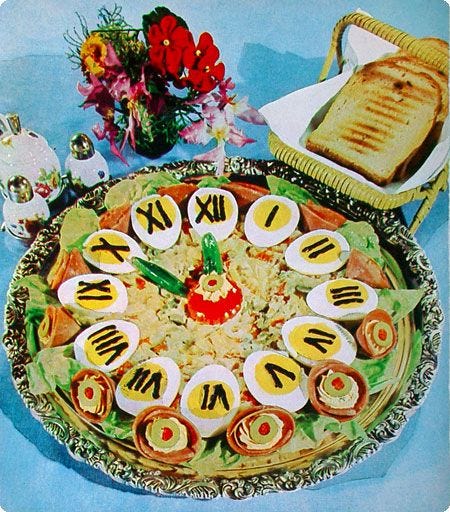


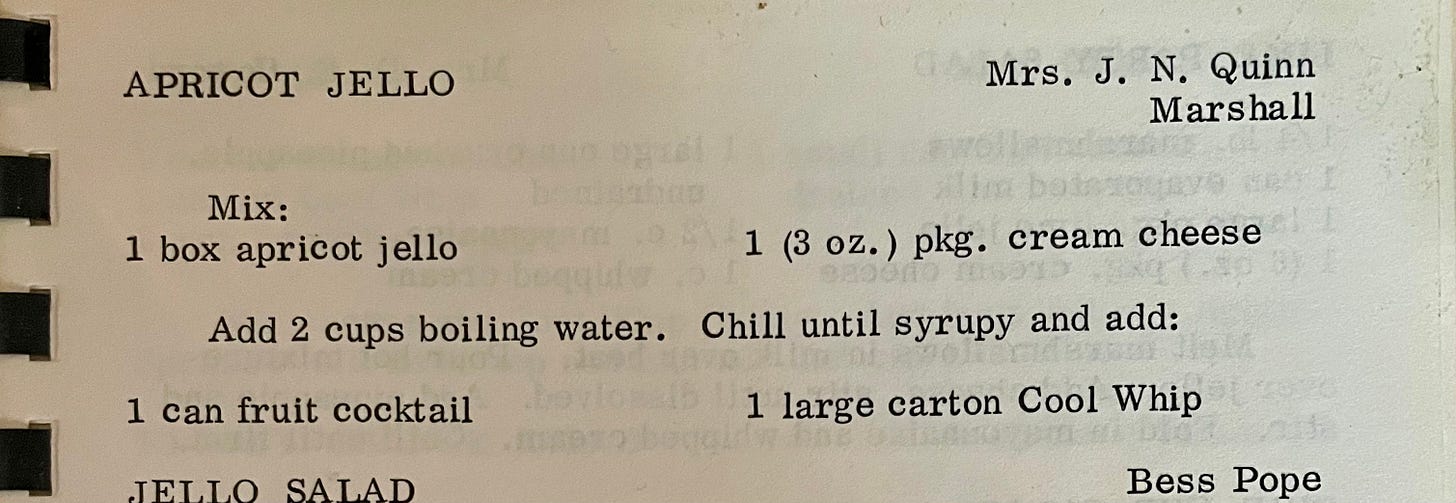

My great aunt would make Divinity from time to time and I always loved it. Haven’t had it in ages.